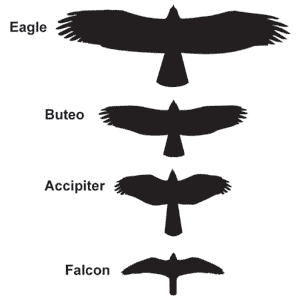5 Essential Hawk Identification Tips for Birders
Updated: Mar. 01, 2024
Use expert tips and a helpful chart to improve your hawk identification skills. Plus, learn about the common types of hawks you may spot while birding.
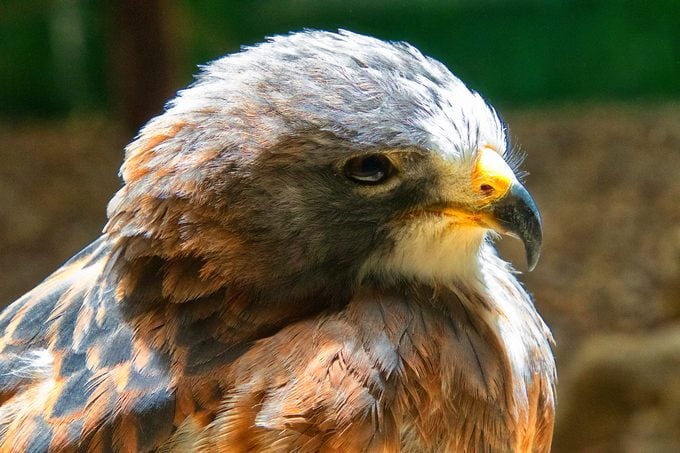
While I was at the Cape May Autumn Birding Festival, there was major chatter about a Swainson’s hawk spotted in the area, which excited all of us birders! But as I wondering how the heck people knew what it looked like and was planning which field trips to attend on Saturday, I came across the description of a hawk identification workshop. It said, “Struggling to separate a sharp-shinned hawk from a Cooper’s? Amazed when a bald eagle is spotted high in the sky where you see nothing?” YES and YES, I thought!
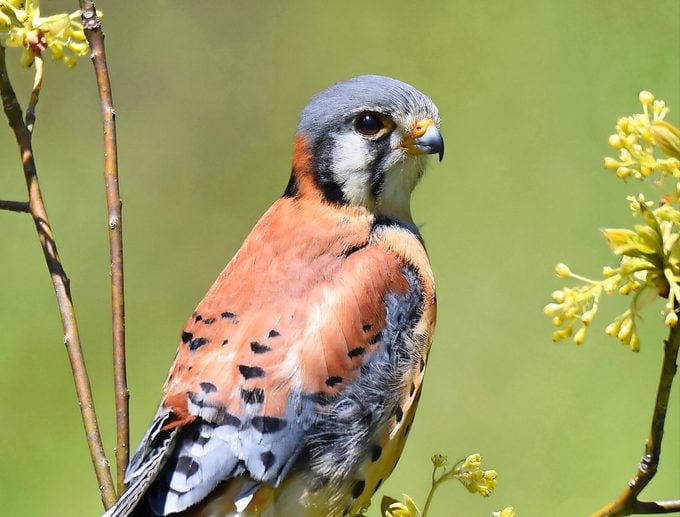
Unfortunately for us, birds of prey don’t usually strike a lovely pose like this American kestrel (above), giving us the opportunity to make an identification at eye level. You can’t really rely on field marks, colors and size when you’re looking at the bright sky and the birds are SO far away. Here are a few hawk identification tips I learned at the workshop.
Here’s why crows chase hawks.
1. Wing Shape
Look at the chart above to help you with hawk identification in flight. The shape of the wings can offer cues to which family your raptor is in. Accipiter wings have a rounded or pointy shape. And the buteos’ wings are straight and quite broad.
2. Tail Shape and Length
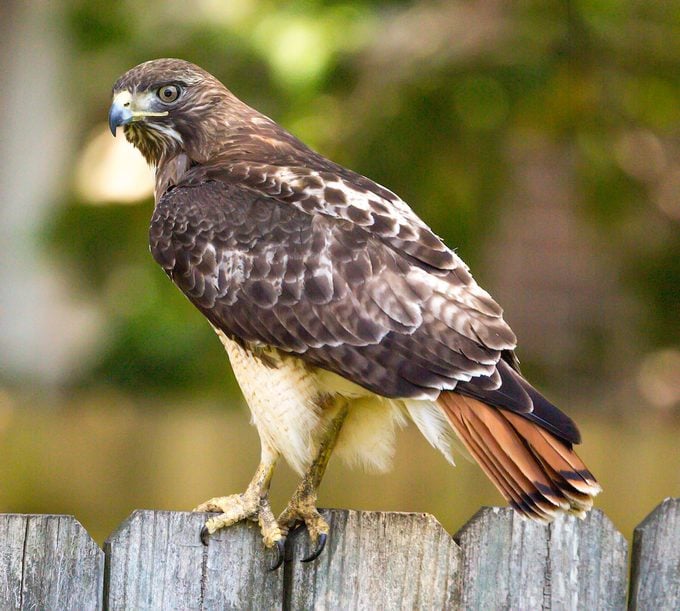
In addition to the wings, the tail can also help with hawk identification in flight. On the chart, look how short and stubby the tail of the buteos are, compared to the longer and rounded tail of accipiters.
Here’s how to identify a red-tailed hawk.
3. Wing Feathers
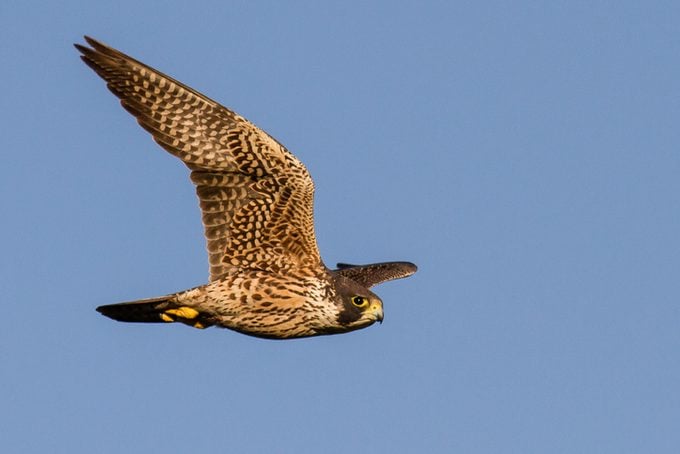
If you’re unsure if you’re looking at a falcon, look for the LACK of fringed feathers at the edge of the wings on the hawk identification chart. Eagles, buteos and accipiters have them, making the wing look almost like a hand.
Learn all about bird wings and flight feathers. While you’re at it, here’s how to tell the difference between falcons and hawks.
4. Bird Shape in Flight

Having trouble deciding between the accipiters? A Cooper’s hawk looks like a “flying cross” (a larger head, rounded tail) and a sharp-shinned hawk looks like a “flying capital T” (a small head).
5. Rump Patch
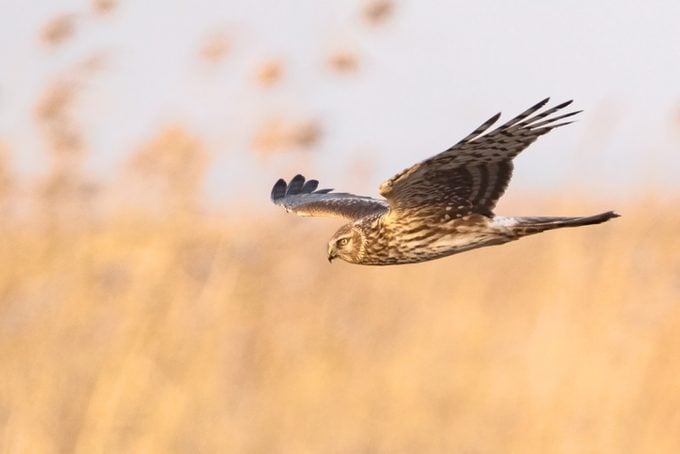
A Northern harrier bird has a very distinguishable, and commonly seen from the field, white rump patch. It’s large enough that you can actually see it as the bird is flying over head. This is a good way to identify northern harriers quickly.
Check out 8 must-visit hawk migration hotspots.
Common Types of Hawks and Falcons
Eagles
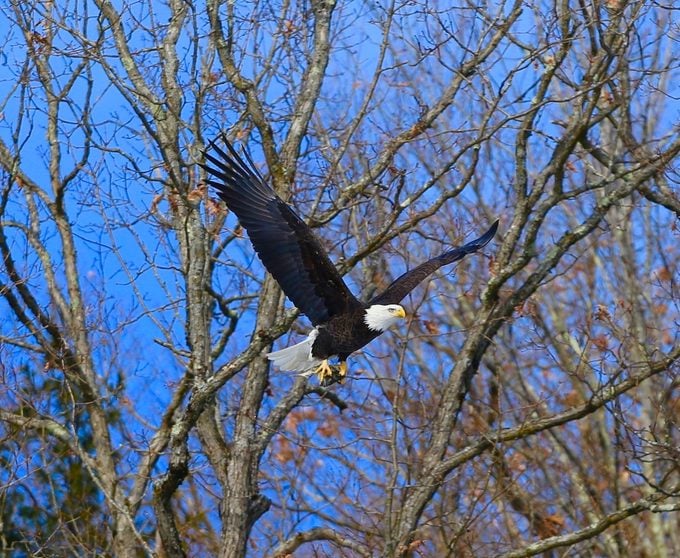
North America is home to two species of eagles: bald and golden. Check out their expansive wings and their ability to soar. They’re hunters and scavengers, feeding on fish, small animals and carrion. Eagles’ extremely large wingspans can reach up to 7 feet or more.
Accipiters and Buteos
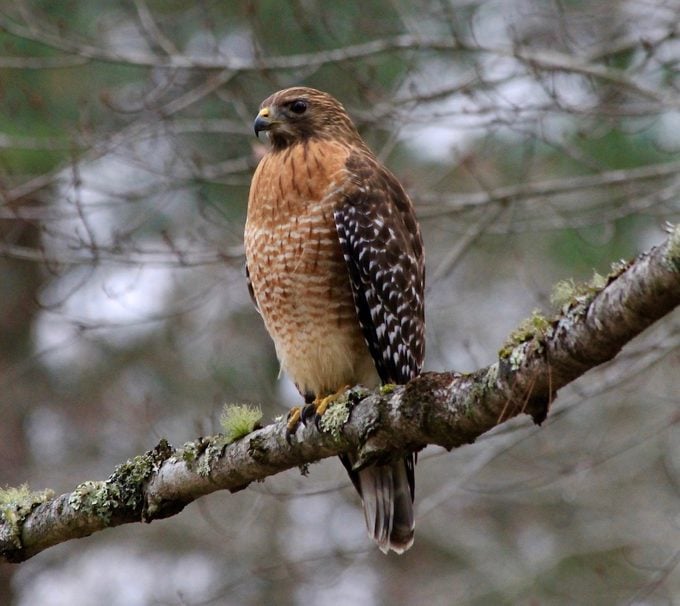
Many accipiters and buteos are widespread across the U.S. and are comfortable visiting backyards in search of a meal. Accipiters include the sharp-shinned hawk, Cooper’s hawk and northern goshawk. Buteos include the red-tailed hawk, rough-legged hawk, broad-winged hawk and red-shouldered hawk.
Falcons
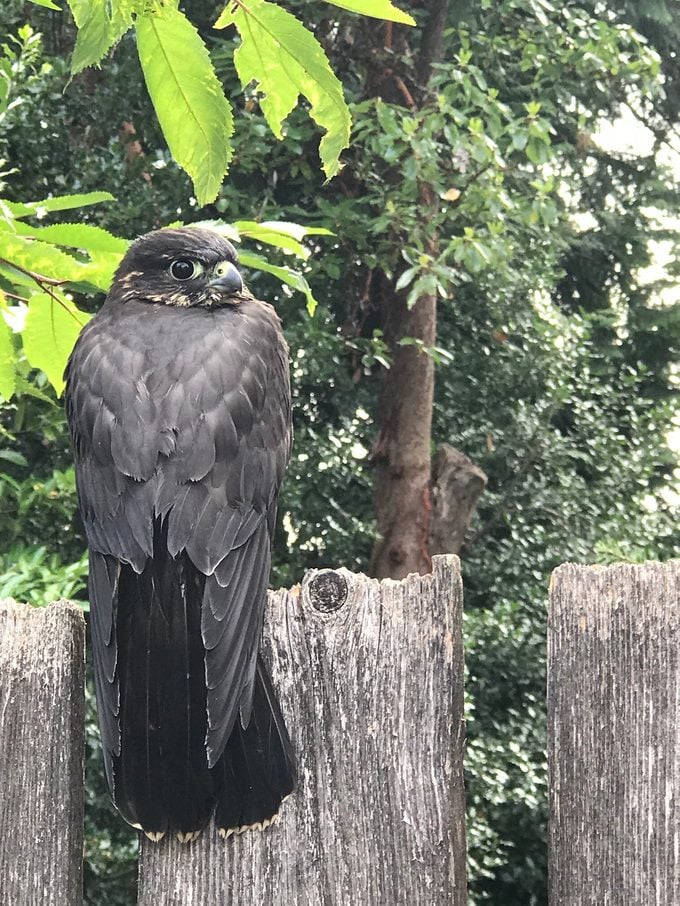
These birds have a need for speed; some species can exceed 200 mph in flight. Falcons come in a variety of sizes—the tiny American kestrel is only 10 inches long. Be on the lookout for an extra-long hook in their beaks, known as a tomial tooth, which is used to rip their food. Other falcons include merlins and peregrine falcons.
Discover the fastest birds in North America.
Ospreys
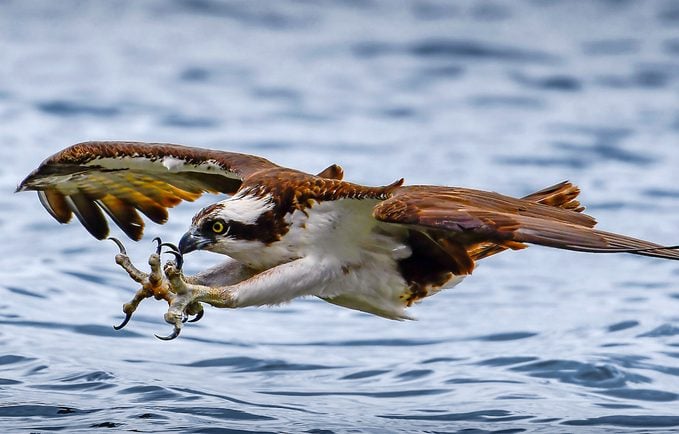
Ospreys are classified in a different family from all other raptors. Often mistaken for bald eagles because of their size and coloring, they eat solely live fish. They dive feet-first into the water in pursuit of food, and sometimes even fully submerge themselves.
Next, discover the amazing types of owls in North America.

